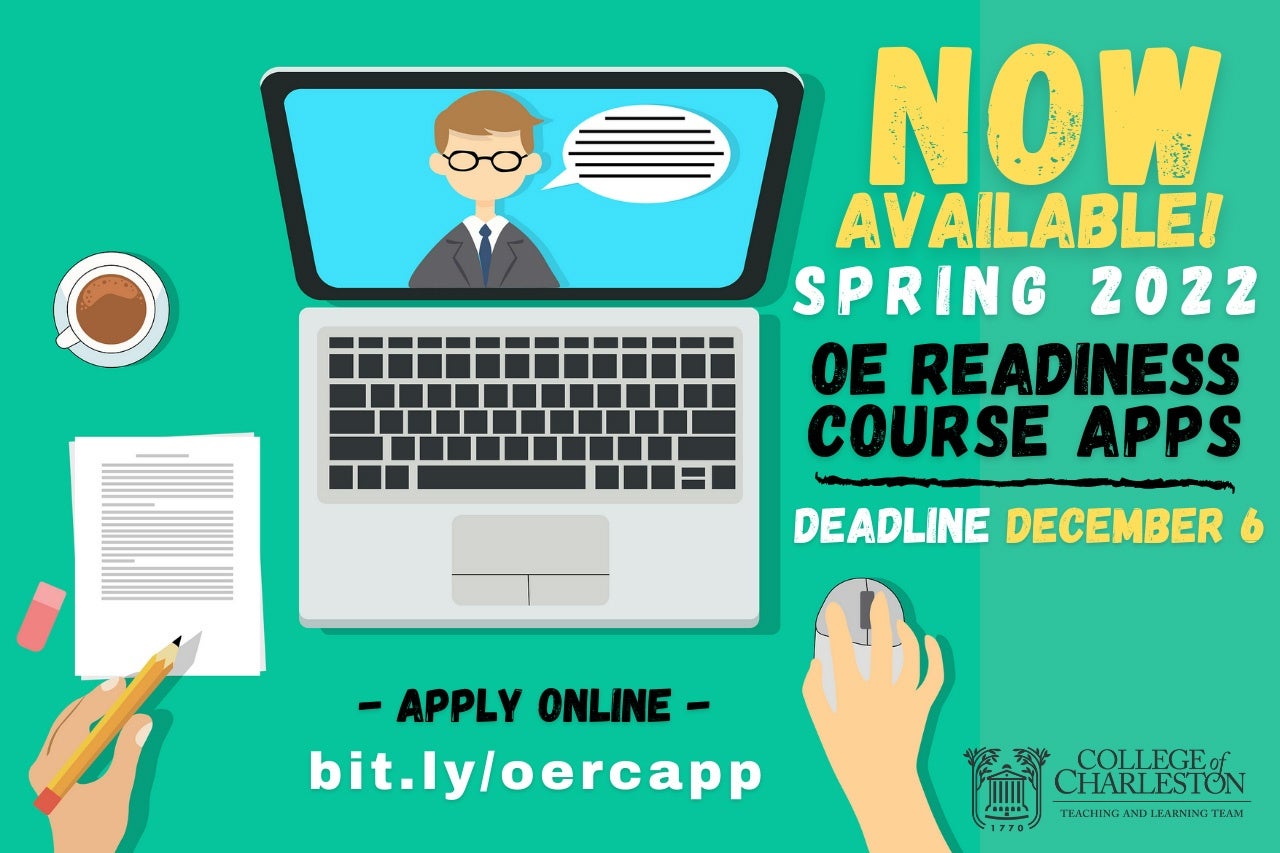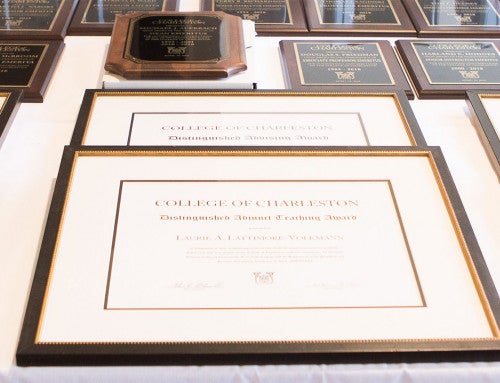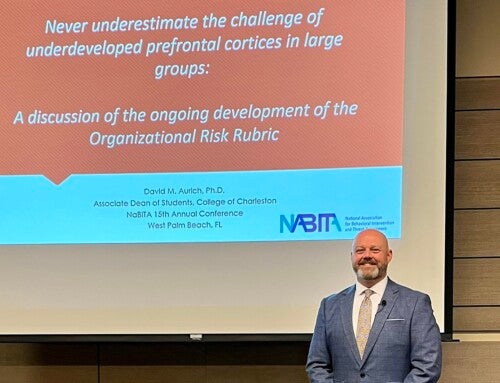At the College of Charleston, we all like learning something new – and we’ve had plenty of opportunities to do so over the past year! And, for the most part, we’ve managed to do it all online.
Of course, online education is nothing new at the College of Charleston. In fact, the Teaching and Learning Team (TLT) has been offering College of Charleston faculty an Online Education (OE) Readiness Course (formerly Distance Education [DE] Readiness Course) since spring 2012. Traditionally offered every spring, summer and fall as one of the prerequisites for teaching online at the College of Charleston, the OE Readiness Course is a seven-week, asynchronous online faculty development program that covers both the pedagogical and technological aspects of online education.
RELATED: Learn more about the Online Education Readiness Course.
“The College of Charleston is committed to cultivating a learner-focused culture that furthers the academic experience of students,” says Chris Meshanko, OE training and development coordinator with the TLT. “In addition to cultivating the technological skills needed for creating, managing and facilitating a successful online course, faculty will explore instructional strategies that construct and facilitate a learner-centered approach to distance education. Another benefit of the course is that they experience distance education as a student.”
Approximately 56% of all faculty have completed the standard OE Readiness Course, and – in preparation for the e-learning period caused by the COVID-19 pandemic – many more completed an abbreviated on-demand version of the course over the spring and summer of 2020.
Still, says Meshanko, even faculty who took the self-paced OE On-Demand Express Readiness Course should consider taking the standard course.
“The traditional course has many benefits and can really provide some great insight for faculty,” he says. “There are plenty of reasons to take the course.”
Here are five of those reasons that faculty should apply now for the Spring 2022 OE Readiness Course (applications are due Dec. 6, 2021):
1. Receive guidance and feedback from experienced faculty mentors.
The main difference between the standard OE Readiness Course and the self-paced OE On-Demand Express Readiness Course is mentor support. In the standard OE Readiness Course, you are assigned a mentor who has completed the OE Readiness Course and taught multiple online and/or hybrid courses. Your mentor will provide you with guidance and personalized feedback during every step of the course design process.
“I was fortunate enough to come back as a mentor, and so I use the mentorship experience to redesign my course every single time,” says Lancie Affonso ’96, an instructor in the Department of Computer Science who has mentored fellow faculty members more than five times now. “That helps me be more disciplined and learn about the new tools that come in each time the course is redesigned.”
2. Leverage the comprehensive Course Planning Document (CPD) to design your course.
Throughout the standard OE Readiness Course, you will use your CPD to map out every element of your course – syllabus, communication strategies, learning outcomes, course pathway, activities and assessments, and content delivery. And, your mentor and colleagues will offer ideas and support along the way.
With research-based lessons covering course design, communication, community building, assessment and content delivery, the course allows participants to spend time in each module, formulating content for their personal courses.
3. Start building your online or hybrid course in OAKS.
As you work through your CPD, you will be asked to build elements of your course in an OAKS development course created just for you. Not only will this allow you to become more familiar with some of the tools and features in OAKS, but it will also allow you to easily copy these components into your real course when you’re ready.
In addition to working on the assignments and readings, participants in the OE Readiness Course are expected to log into the course in OAKS at least four days a week to stay current with coursework, as well as to regularly communicate with their mentors and interact with their peers on the discussion board.
4. Learn tips, strategies and tools from your colleagues.
Throughout the standard OE Readiness Course, you’ll have the opportunity to engage in whole-class and small-group discussion on best practices relating to pedagogy and course design. The best part is, you’ll be able to revisit these discussions, for ideas and resources, forever.
“It’s a continuous learning process,” says Affonso. “Distance education is changing drastically from year to year, and I think as faculty, we owe it to our students to at least tune in and see what works and repurpose and reorganize our course occasionally.”
5. Ask questions and get answers.
Whether you have an OAKS question, pedagogical question, course design question or really any question, your course facilitator, mentors and colleagues are always quick to provide an answer or direct you to the best resource(s). The goal is to help you feel comfortable and confident designing your online or hybrid course.
The Spring 2022 OE Readiness Course runs from Feb. 2 to April 1, 2022, and applications are due Dec. 17, 2021. Before applying, faculty should review the policies set forth by academic affairs and the Online Education Steering Committee.
To apply to the Spring 2022 OE Readiness course, complete the application on TLT’s blog by Dec. 17, 2021. Applicants will be notified of their acceptance status by Dec. 20, 2021.
To apply to become an OE Faculty Mentor, complete this application. Questions may be directed to Chris Meshanko.




